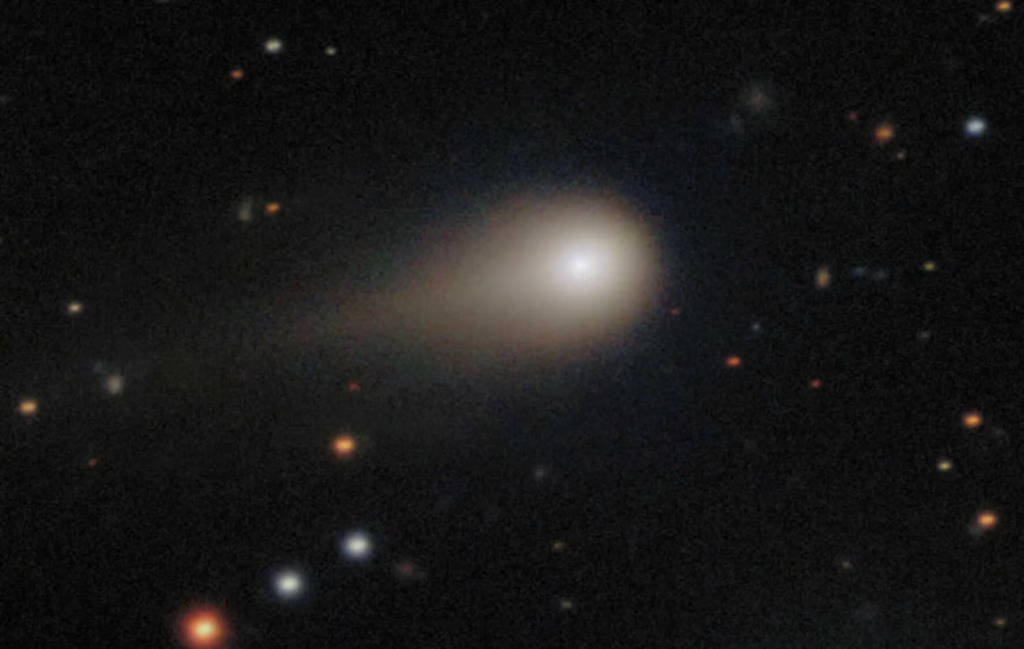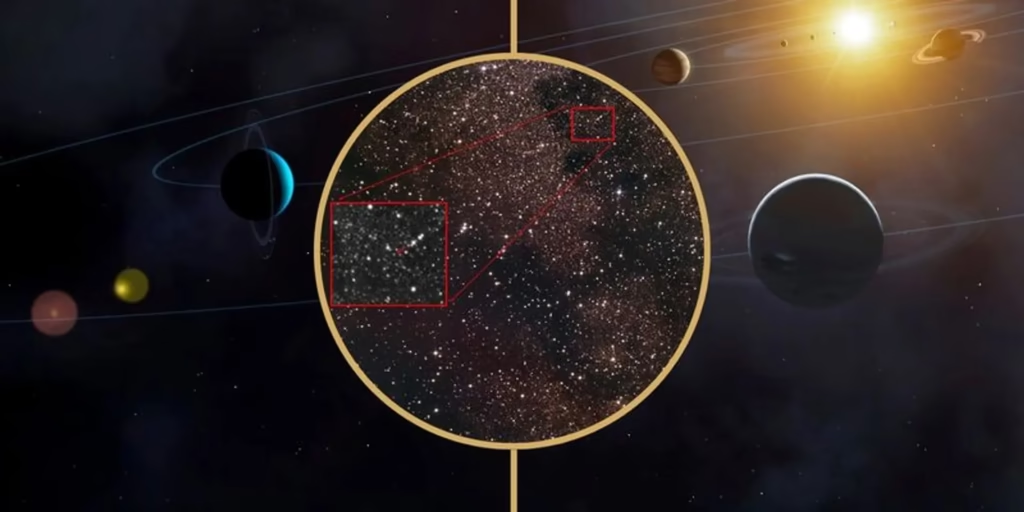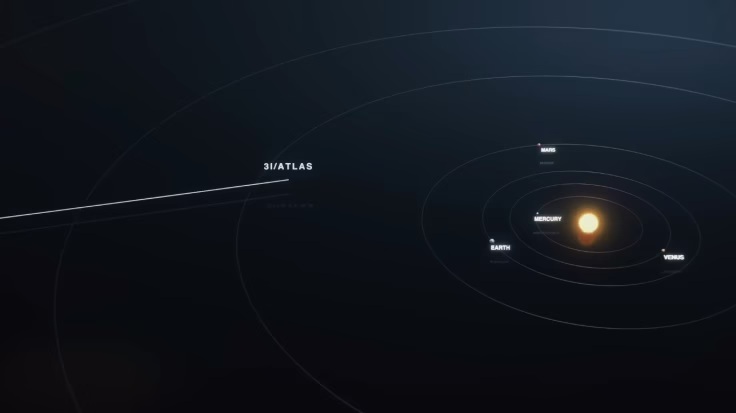As the third confirmed interstellar visitor crosses the Solar System, a fierce argument has broken out over what it really is. Named 3I/ATLAS after NASA’s Asteroid Terrestrial-impact Last Alert System in Chile spotted it on 1 July, this Manhattan-sized object, about 3 miles wide and an estimated 33 billion tons, has fired imaginations and nerves.
Some see a pristine relic from another star. Others whisper a bolder idea, an engineered probe. At the centre sits Harvard astrophysicist Avi Loeb, challenging NASA’s stance and urging the release of images he says could change the story.
A Stranger from Afar: 3I/ATLAS Joins the Short List
Interstellar objects like 3I/ATLAS are thought to be cast-offs from distant systems, flung into space at extreme speeds. Only two were confirmed before it. There was the cigar-shaped ‘Oumuamua in 2017, which Loeb argued might be artificial, and 2I/Borisov in 2019, a more standard comet. 3I/ATLAS, racing on a hyperbolic path at over 50 kilometres per second, promised rare clues to alien chemistry.
That early promise soon met skepticism. Observers found features that did not fit typical comet behaviour. Unlike its smaller predecessors, 3I/ATLAS is vast, and its speed and mass hint at a violent birth in a long-ago planetary system.
Hubble images in July showed a faint haze but no dramatic tail. Then came the oddities. Ground-based spectra reported strong nickel lines without matching iron, which Loeb called physically inconsistent for natural ice and rock.
By September, the Nordic Optical Telescope in the Canary Islands captured an unusual anti-tail, a stream pointing towards the Sun, against the push of the solar wind. Loeb likened it to forward-facing thrusters in a Medium post.
The intrigue deepened near Mars on 2 October, at a distance of about 30 million kilometres. NASA’s Mars Reconnaissance Orbiter and ESA’s ExoMars Trace Gas Orbiter observed it, yet public data arrived slowly. At perihelion on 29 October, around 1.36 astronomical units from the Sun, the object absorbed about 33 gigawatts of solar energy.
Its brightness jumped and shifted to a bluer tone, which some read as internal heating. NASA’s Swift Observatory detected hydroxyl, a sign of water vapour, consistent with a very old core. There was no dramatic breakup. On 31 October, NASA’s Jet Propulsion Laboratory reported non-gravitational acceleration, a small speed change not fully explained by normal outgassing. Loeb seized on it, arguing that propulsion remained on the table.
Loeb’s Rebellion: From ‘Oumuamua to Talk of a Mothership
Avi Loeb, 65, is no stranger to controversy. The Israeli-born Harvard professor, former head of astronomy, and author of Extraterrestrial, has pushed the search for intelligent life for years. His Galileo Project scans the skies for unidentified aerial phenomena, and ‘Oumuamua’s acceleration, with no visible jets, convinced him that an artificial origin should be considered. Critics called him a sensationalist. He kept writing and has published a flurry of papers on 3I/ATLAS.
For this object, Loeb has listed nine warning signs across essays and interviews. He cites its huge size, the late appearance of a visible tail, the anti-tail, nickel-rich emissions without iron, the bluer colour near the Sun, and a period around perihelion when Earth-based observations were constrained.
He suggests more radical ideas, such as a Trojan horse cloaking technology, or a larger craft releasing small probes towards planets. He pointed to 19 December as a date to watch, when 3I/ATLAS passes within about 240 million kilometres of Earth. On The Joe Rogan Experience, he put the odds of artificial origin at 30 to 40 percent, calling it a black swan event. He dismissed high-profile critics, saying popularity is not a substitute for research.
His stance has energized the public. #3IATLAS trends across social media, from jokes to doomsday posts. Amateur astronomers claim to see Doppler quirks that they treat as signals. The backlash is strong as well. Reddit’s r/Astronomy calls him reckless for ignoring natural models, such as low-activity comets with hidden jets. A LiveScience article quotes experts who say the data point to a comet.
NASA Under Fire: Slow Data or Simple Bureaucracy?
NASA, keeping a measured tone, states that 3I/ATLAS is the third interstellar comet, with no sign of alien tech or danger. Acting Administrator Sean Duffy even replied to Kim Kardashian on X, inviting her to see Artemis and calling it just a rock. Models fit a natural origin. The anti-tail has a precedent, like Comet Arend-Roland in 1957, as planetary scientist Heidi Hammel notes. NASA’s Tom Statler says the object looks very comet-like. There are no signals or deliberate manoeuvres, only strong outgassing of water.
Loeb accuses the agency of dragging its feet. He wants HiRISE images from the MRO’s 2 October opportunity. With about 30 kilometres per pixel, better than Hubble by a factor of three for this target, HiRISE might show surface texture or signs of structure.
Loeb emailed principal investigator Alfred McEwen and says he received no reply. He blamed a government shutdown from 1 October for delays and urged that raw data be shared with scientists. In an essay on 31 October, he argued that science should not be hostage to politics. He rated the risk of withholding as a moderate concern and even suggested UN oversight.
Pressure then moved to Capitol Hill. Florida Congresswoman Anna Paulina Luna sent a letter to Duffy on the same day, asking for all observations of 3I/ATLAS and interstellar meteors. She wrote that transparency builds trust. Conspiracy forums erupted, alleging a cover-up. Loeb says he would prefer a natural answer, yet sees a risk if it is not. Fresh tests are coming. ESA’s Juice is expected to look for mass loss, and ground telescopes will hunt for gas clouds in December. If gas is absent, some argue that outgassing cannot account for the acceleration.
Echoes of ‘Oumuamua: Hype, Hard Data, and an Open Question
The moment feels familiar to those who remember the ‘Oumuamua storm in 2017. Loeb’s book sold widely and drew eye-rolls in equal measure. He repeats a simple demand: extraordinary claims need data. Detractors, from columnists to senior scientists, argue he jumps to ET without evidence. Even so, the International Asteroid Warning Network has flagged 3I/ATLAS for priority study, which reflects its rarity and value.
3I/ATLAS will head for Jupiter’s region in 2026, then leave for interstellar space. The fight over its nature highlights a long-running tension in astronomy, strict empiricism faced with bold interpretation.
Loeb’s push, backed by a massive audience and political pressure, has raised a thorny issue: who controls the flow of public space data? Will HiRISE imagery settle the case or trigger a new storm? For now, the community keeps watching. In Loeb’s words, humanity is probably not alone in the universe, but the question remains whether anyone is ready to prove it.

















